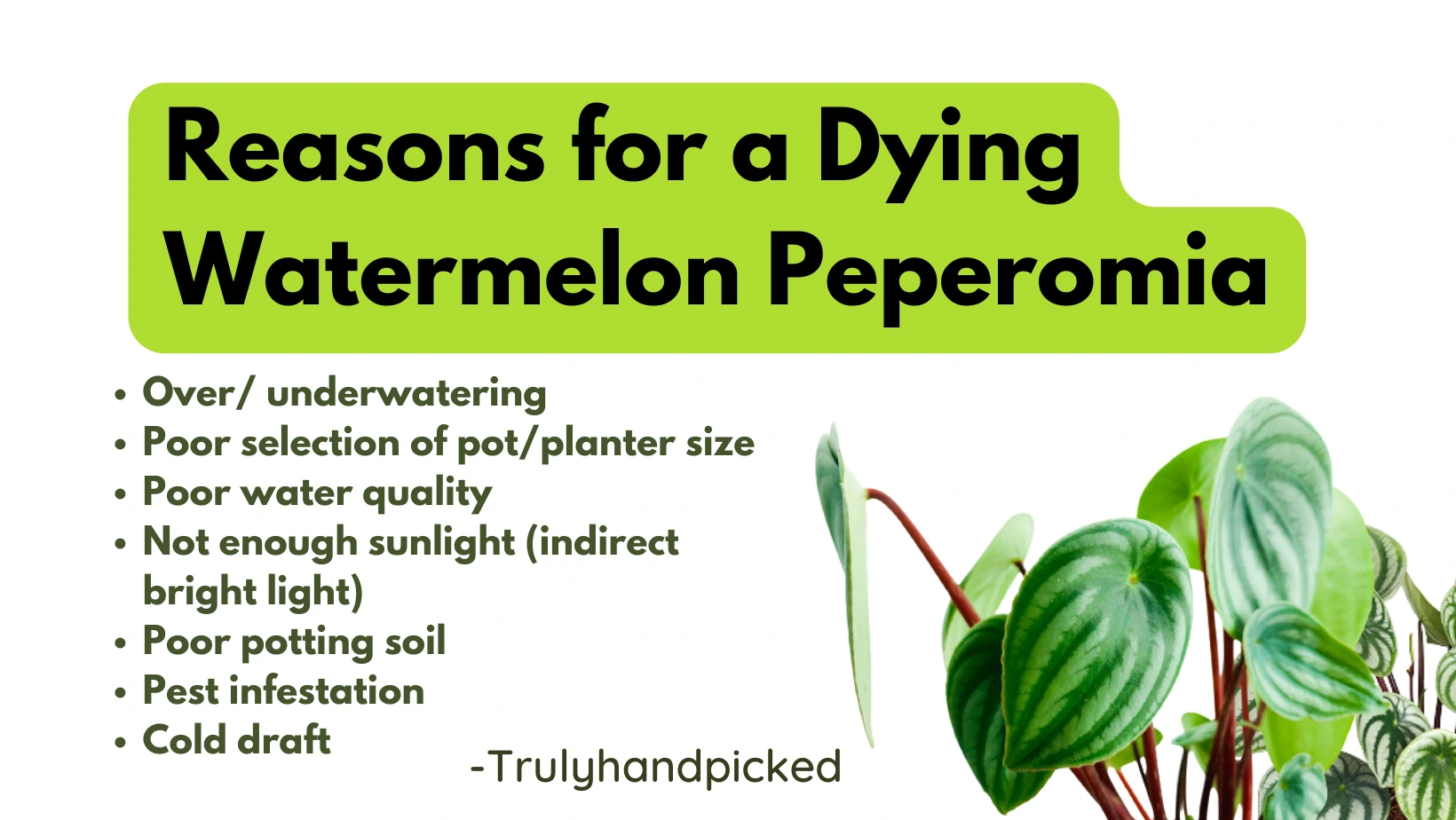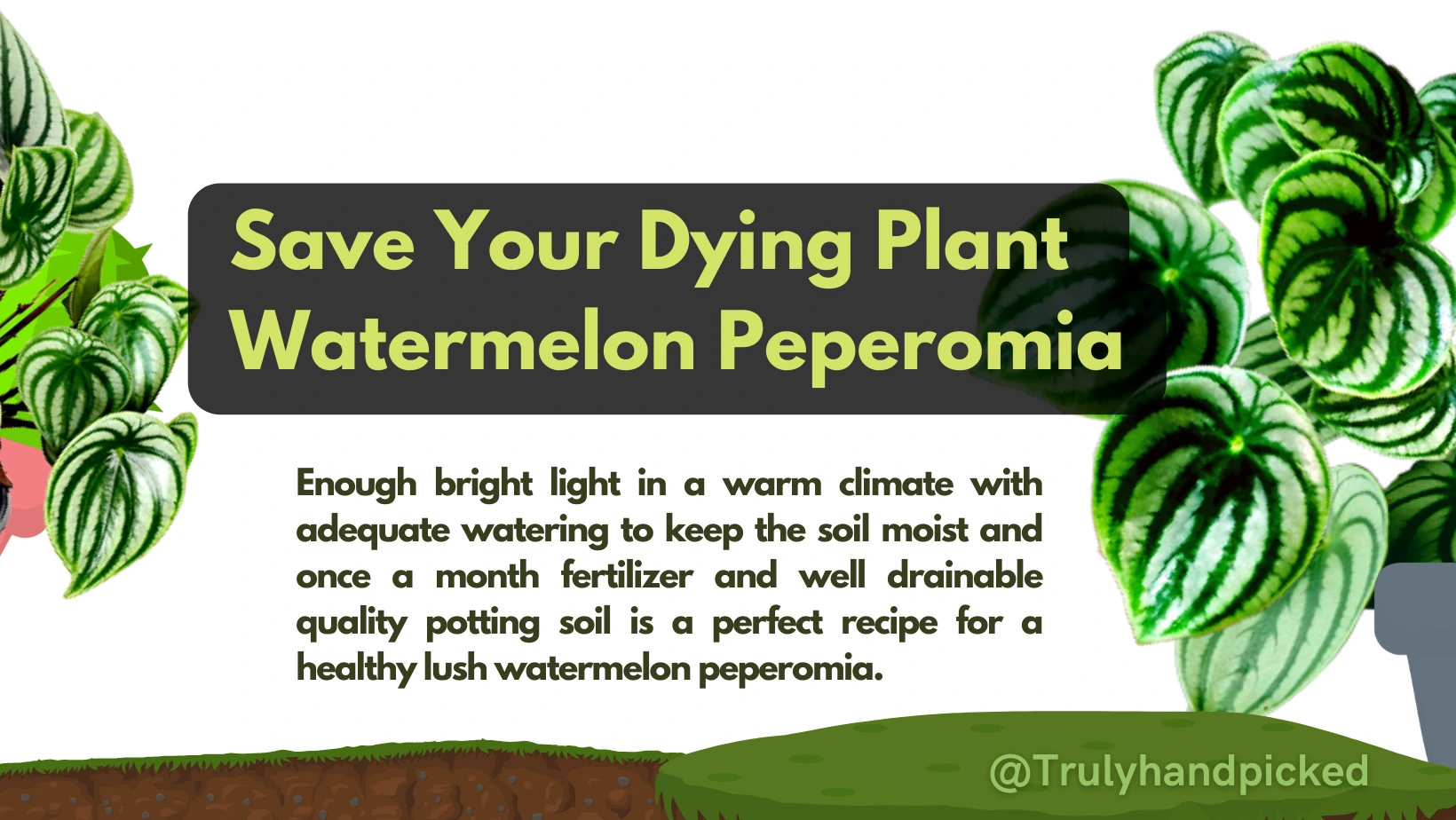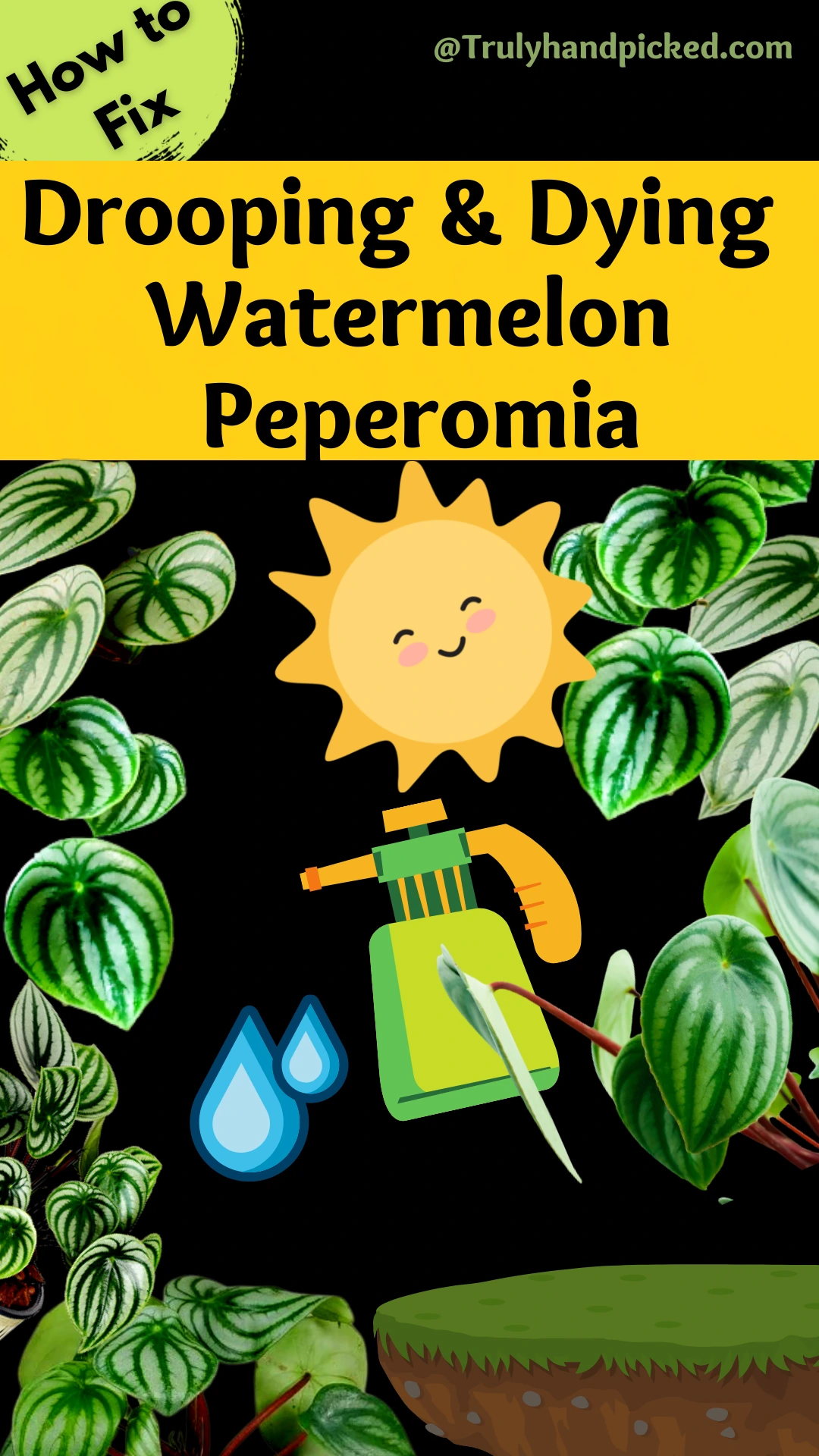The watermelon peperomia is a good-looking houseplant, that belongs to the flowering species of the Piperaceae family. It is also known as watermelon begonia, due to its exclusive display.
Dropping and curling leaves of Watermelon Peperomia: Enough bright light in a warm climate with adequate watering to keep the soil moist and once a month fertilizer and well drainable quality potting soil is a perfect recipe for a healthy lush watermelon peperomia.
Pruning dying leaves, repotting when it’s outgrown and misting leaves add bonus points for your peperomia to stay firm and healthy.
Peperomia leaves curl to prevent water loss and try to survive at a bare minimum of the available resources.
This genus of peperomia is super easy to grow indoors and adds a dash of tropical look, while placed in a room. Plants can grow up to 12 inches and thus, are effortless to manage as a houseplant.
Its unequally designed leaves seem like watermelons and that’s why they are called watermelon peperomia. Let’s compresence some smart tips on how to grow and take care of a watermelon peperomia plant expertly indoor-
Curling & Dropping Leaves of Watermelon Peperomia:
Reasons
- Improper water (over / underwatering)
- Poor selection of pot/planter size
- Poor water quality
- Not enough sunlight (indirect bright light)
- Poor potting soil – Nutrient-less soil, clayish and soggy soil
- Pest infestation
- Cold draft
Among the normal problems of a watermelon peperomia plant, dropping leaves is the common one. Drooping leaves mostly occur due to the uneven moisture in the planting soil of a growing watermelon peperomia plant.
If you keep your plant underwatered or overwatered for long you will surely see that your plant is starting to droop the leaves within one month.
If your indoor watermelon peperomia plant is getting the same issue, let’s find out its real cause and then, try to get rid of this problem permanently by following these simple yet effective methods-
How to Fix Dying Watermelon Peperomia
- Take a moisture meter or use your fingers to measure if soil moist enough 2inches below the surface.
- Repot your plant right away to be certain about the dryness of the soil or over-moistness of the soil that leads your plant towards drooping leaves
- Now, add a mulching layer to your newly potted plant using pebbles to retain the moisture (don’t leave it soggy).
- Improper humidity also leads a growing watermelon peperomia towards dropping leaves, so apply some methods to increase or balance the humidity effectively
- Misting the leaves, adding an artificial humidifier, covering the plant with plastic layers, etc. are some effective tricks you can apply here
- And try to check the temperature level of your room, once you face the drooping leaves problem of a healthy watermelon peperomia plant suddenly
- Cold nights and high temperatures can force a watermelon peperomia plant to droop leaves, try to place it in a warmer spot of the house soon
- You can place it outside of the house for 1-2 weeks if you want. Let the plant grasp the adequate light and warmth enough for a couple of days. Then, bring it back indoors again and place it in the spot where your plant can get bright but indirect sunlight constantly.
Watermelon Peperomia Care: Quick Overview
Soil: Rich and acidic soil with well-drained quality that is equally combined with perlite and peat moss
Water: Low-water needs, around once in every 7-10 days
Fertilizer: Apply any slow-release water-soluble fertilizer in liquid form once a month
Sun Exposer: Sun with partial shade
Climate: The plant survives normal room temperature with standard temperature up to 80 degrees F and moderate humidity
Hardiness Zones: 10 to 12
How to Care for Watermelon Peperomia Properly:
Let’s see how easily you can take care of this popular houseplant to give it the best thrive-
- Prepare a typical potting soil by mixing perlite and peat moss in equal amounts to make it naturally well-drained
- Keep the pH level slightly acidic and make the base evenly moist to plant a germinated watermelon peperomia in it
- Thoroughly water the plant once after the plantation and let the top of the soil dry again before the next watering
- Try to fertilize your plant once a month using normal all-purpose fertilizer in liquid form
- Place the planter near a west or south-facing window where it can grab 6-7 hours of bright indirect sunlight
- Make sure your plant stays in a room where the temperature is stable between 65 to 80 degrees F consistently
- Plants can tolerate 30% to 40% humidity and slight misting in a bit higher humid condition
- Rotate the planter once every week to let the light reach every part of your growing watermelon peperomia plant
- Look for common troubleshooting issues like drooping or curling or yellowing leaves and apply the remedies immediately
- Repot your plant when it overgrew the current planter and prune the unhealthy or overgrown shorts in time
Besides, being a healthy houseplant with juicy foliage, your watermelon peperomia often gets some annoying pets and bugs around the leaves and stems. Try to rinse your plant with neem oil or homemade soapy water once in every few whiles.
How to Propagate Watermelon Peperomia:
This gorgeous houseplant can be propagated in three different ways. You will get a completely successful outcome in each case if you follow the right produces to do the jobs.
So, let’s see how to do these propagations properly through these easy step-by-step methods-
Propagation Through Leaves with Petiole:
- Find a healthy and fully-grown leaf from your plant and wash it thoroughly carefully
- Now, bring a sterilized scissor or cutter and cut the leaf in half directly above the part of the petiole
- Bring a planter prepared with needed potting soil and sow the half leaf in the soil by keeping the petiole top and cutting section into the soil
- Sprinkle a small amount of water to make the soil of your planter evenly moist
- Now, cover it with a plastic bag as the plastic bag will provide the best humidity for the rooting climate,
- Remove the bag after every 10-14 days, add a thin layer of water and cover it again accordingly
- You will see small roots grow within one month, once the petiole part start sprouting first
- Look closely, you will see almost 5 baby plants will grow from the top of the leaf
- Wait till each plant will reach 1-2 inches long, replant them individually in a separated planter then
Propagation Through Division:
- Take the whole plant out of its current planter, when you decide to replant it
- Now clear the root balls from the cluster soil mist and divide the whole shots with separate stems and root systems
- Trim the unwater as well as overgrown roots with disinfected garden tools and plant them in separate planters
- Always use new loose and well-drained potting soil to replant them through divisions
- Secure the base properly after the plantation and water it thoroughly once
- Now place the planter in a warm moderately humid place where the plant can get bright but indirect sunlight to let it the proper thrive
Propagation Through Cutlets in Water:
- Firstly, cut an offshoot with 3-4 healthy leaves and place the scalloping part of the stem into a glass of distilled water
- Place the glass in a warm spot of the house but away from direct sunlight for 5-6 weeks
- Keep changing the water once a week and check its developments attentively
- You will find that new roots will appear from the bottom within 6 weeks,
- Wait until they would grow 2 inches long, then plant them in a planter prepared with potting soil accordingly
FAQ:
Is Watermelon Peperomia Toxic to Cats?
Watermelon peperomia plants don’t have any toxic properties or poisonous parts and thus, are not at all toxic to cats or any other house pets.


